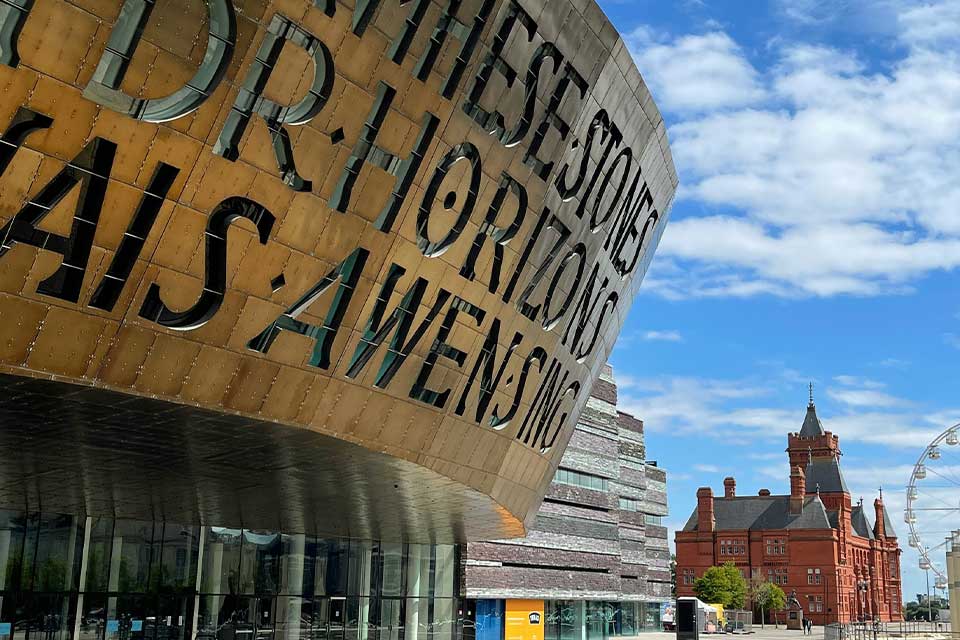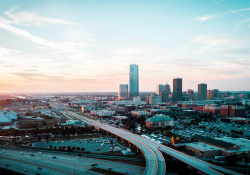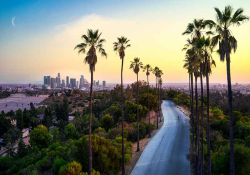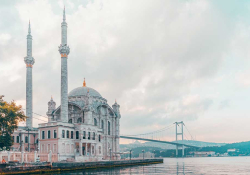Cardiff, Wales

Hear the seagulls? They carouse all over the city, cawing about the places they’ve been beyond Wales. That’s always the way of it in Cardiff: everyone talking about what lies over the horizon.
Cardiff—in Welsh, Caerdydd—is a port city. Remember that. It says a lot about the place. Around the turn of the twentieth century it was the biggest port in the world, shipping coal and steel—especially coal—all over the world. Welsh coal from the mines up the Valleys, just north of the city, fueled industrial dreams throughout the nineteenth and twentieth centuries. That’s why relatively few Welsh people emigrated to the US compared to the Scots and Irish. There were jobs at home. Heck, people flocked to Cardiff. For a time it was one of the most multicultural cities on the planet.
I’m a serial visitor; I’ve been so many times I describe myself now as “more than American, less than Welsh.” When I’m there I stay with my friends Gwyneth and Leighton and their greyhound, Jen. They’re makers of superb spaghetti Bolognese and miners in their own right, delving into conversations of dizzying depths, rather than coal mines. In 2005 Gwyneth Lewis was named the first National Poet of Wales. “Time was they walked on water dry / so full of ships were the teeming docks,” she writes of Cardiff sailors of old in a villanelle, “History Lesson.”
Murmansk, Osaka, Paraguay:
the girls they met there call them back . . .
Time was they walked on water dry, . . .
Back home in Cardiff, hear the halyards play
sweet music when the winds fall slack.
Time was they walked on water dry.
We dream in video what they lived by day.
Gwyneth grew up in Cardiff, left for the quads of Cambridge and Oxford and the lights of New York and Harvard, but like the sailors, Wales’s capital city drew her home. In the 1990s, before the fever dream of Brexit swept the nation, that home underwent a profound transformation. EU dollars flowed into Cardiff in the form of a massive bay and docklands reclamation project—the largest of its kind in Europe. Cardiff Bay is now waterfront home to the epicenter of Welsh politics and culture. The latter is embodied by the Wales Millennium Centre, a national arts venue pierced by windows that spell out the world’s largest poem—a poem Gwyneth distilled from Welsh history and the farsighted, squint-eyed gaze of Cardiffians.
Cardiff Bay is now waterfront home to the epicenter of Welsh politics and culture.
The center, completed in 2009, is made of iconic Welsh materials: slate, metal, wood, and glass. The poem is made of Gwyneth’s two languages, Welsh and English. The Welsh words read, “Creu Gwir Fel Bwydr o Ffwrnais Awen”—Creating Truth Like Glass from Inspiration’s Furnace. The English words, no mere translation: “In These Stones Horizons Sing.”
As if listening to their song, the nearby Senedd—the Welsh Parliament, a transparent building with a rippling sail of a roof, built after Wales finally voted for partial home rule in 1997—faces out to sea rather than toward the hilly country at its back. As if to say, the future’s out there somewhere. Let’s grab it and bring it home.
Northampton, Massachusetts





